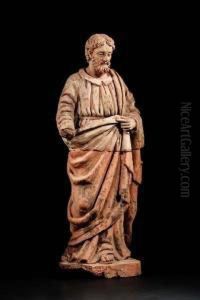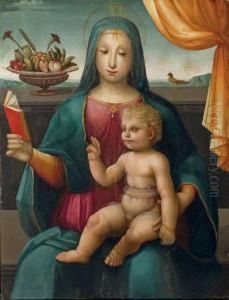Raffaello Sinibaldi Raffaello Da Montelupo Paintings
Raffaello Sinibaldi, better known as Raffaello da Montelupo, was an Italian sculptor and architect of the Renaissance, active primarily in Tuscany and Rome. Born in 1505 in Montelupo Fiorentino, a small town known for its ceramics and located near Florence, he was part of a generation of artists who were to take the Renaissance ideals into the mid-16th century, blending them with the emerging Mannerist style. Raffaello was the son of another notable sculptor, Baccio da Montelupo, who played a significant role in his early training and artistic development.
Raffaello’s career is well documented through his autobiography, a rare and valuable source for understanding the life of a Renaissance artist. His work included both sculpture and architectural projects, showcasing his versatility and creativity. He was significantly influenced by the works of Michelangelo and Raphael, which is reflected in his attention to harmony and detail.
In Rome, Raffaello worked on several important projects in the Vatican under the patronage of Popes Leo X and Clement VII, including contributions to the fortifications of the Borgo and the decoration of the Vatican palaces. His notable sculptures include the angel holding the Superscription from the Ponte Sant'Angelo, originally designed by Michelangelo, and the relief of the Madonna del Sasso in the church of Santa Maria sopra Minerva.
Despite his contributions and the acknowledgment of his talent by his contemporaries, Raffaello da Montelupo remains a somewhat lesser-known figure of the Renaissance, often overshadowed by the era's more famous artists. However, his work represents a critical link between the High Renaissance and the Mannerist movement that followed. Raffaello da Montelupo died in 1566, leaving behind a legacy that, while not as celebrated as some of his peers, significantly contributed to the artistic transitions of his time.

